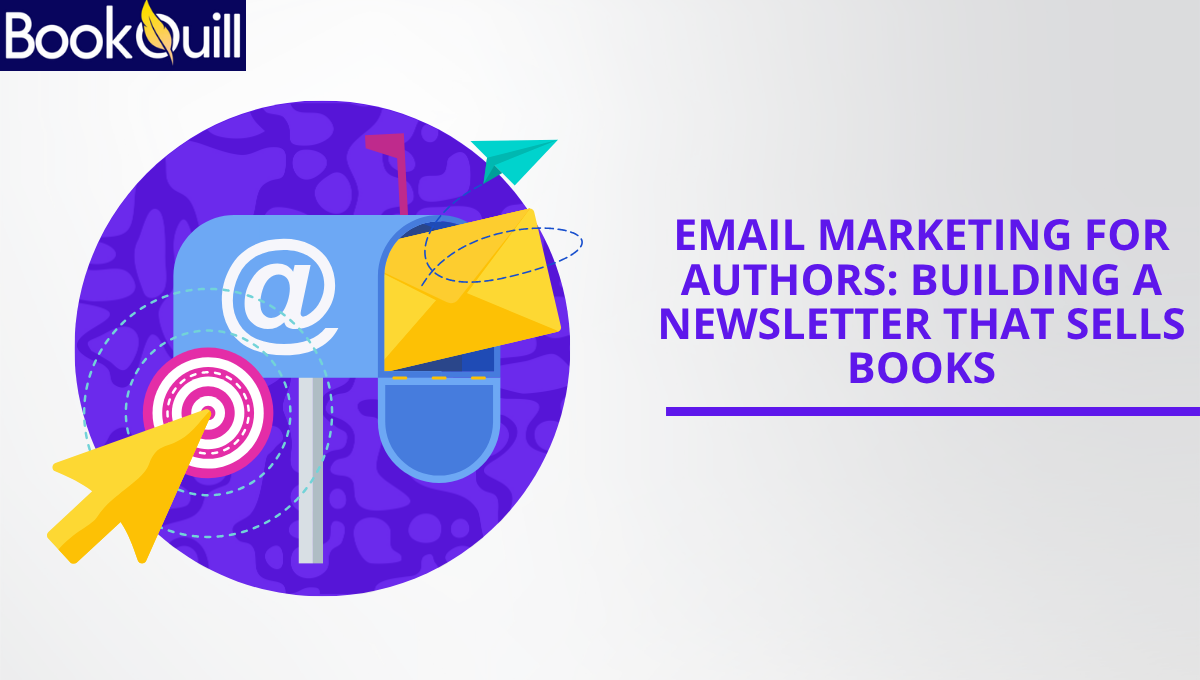Email Marketing for Authors: Building a Newsletter that Sells Books
There was a time when door-to-door marketing was the thing. A salesman would trudge from one house to another, peddling...

There was a time when door-to-door marketing was the thing. A salesman would trudge from one house to another, peddling their wares with free samples and glossy catalogues tucked under one arm. But those days are long gone — the world’s been evolving at a breakneck pace ever since the internet crashed onto the scene, and so has marketing.
In 1978, a marketing manager named Gary Thuerk — working for the old computing giant Digital Equipment Corporation (DEC) — sent out the very first mass email to around 400 ARPANET users, pitching DEC’s new range of computers. That was the first time anyone had tried to sell something through email. Since then, email marketing has morphed so dramatically that it’s almost unrecognizable. Newsletters got pulled into the mix too — now people can subscribe directly to websites and get all the updates, insights, and enticing offers they crave, delivered straight to their inbox.
So, what does this mean for authors and the book industry? How does email marketing help sell books? How much do these campaigns cost? And above all — are there any pitfalls lurking in the shadows?
You’ll find all these answers here. Read this article thoroughly, take notes if you must, and remember: the next great sale might just be one newsletter away.
Why Authors Should Care About Email Marketing
The Direct Connection
We live on a planet where social trends shift more often than a cat changes its nap spots. Having a direct line of communication with your audience can be a real game-changer. Think of it this way: you don’t need to bow to any finicky algorithm or pour money into wallet-draining ads. It’s like having someone’s phone number — you can reach out to them directly, whenever you have something worth sharing.
With email marketing, what starts as a simple message in someone’s inbox can blossom into a relationship built on trust and loyalty — something no algorithm can ever guarantee. It’s an investment that deepens with every open, every reply, every click. Instead of crossing your fingers that your post will appear on someone’s overcrowded feed, you’re delivering your voice straight to where it’s most welcome: your reader’s personal space.
How It Helps Sell More Books
A good newsletter isn’t just spam clogging up someone’s inbox — it’s your way of keeping your books alive in the hearts of your readers. When you launch a new book, you’re not just tossing it out into the world and hoping for the best. You’re letting your loyal readers know, “Hey, this is here — come take a look.” Getting those early eyeballs on what matters most can make all the difference in selling more books.
Some of the best book marketing services swear by this: keep your readers hooked through email marketing by giving them that backstage pass. Share insider tidbits, background stories, or even alternate endings that never made it into print. Little surprises like these keep your audience invested, engaged, and eager for whatever you write next.
Building a Newsletter That Converts
Choosing the Right Platform
When you’re first stepping into email marketing, the first thing you’ll need to do is pick a platform that suits you best. Platforms like Mailchimp, Convert Kit, or Substack are popular for a reason — they’re built with authors like you in mind. Most of these have free versions too, which is perfect if you want to get your feet wet without burning a hole in your wallet. As your list grows and your ambitions do too, you can always upgrade to paid plans that unlock extra perks like automation, detailed analytics, and more customization.
If you’d rather hand it off to the pros, you can always look into a professional book advertising service to handle your promotions for you. They know what they’re doing and can help you get the most out of every email you send. I highly recommend BookQuill’s service — I’ve used them myself and found them to be top-notch.
Crafting Irresistible Content
Now comes the real heart of your email marketing — what you actually put in that newsletter of yours. Readers don’t subscribe just to be sold to every week; they want to feel like they’re part of your inner circle. So mix things up a bit. Share little personal updates, sneak peeks of what you’re working on, bonus chapters, or even behind-the-scenes stories about your writing life. Let them step into your world — the more real and human you feel, the more they’ll want to stick around.
And here’s the thing: more isn’t always better. Blasting people with constant emails is the quickest way to make them smash that ‘unsubscribe’ button faster than you can say “new release.” Find a rhythm that works for you and respects your readers’ time. Good email marketing is about connection, not just promotion.
Growing Your Subscriber List
It’s one thing to write a great newsletter — it’s another to actually get people to sign up for it. This is where lead magnets come in. Offer a freebie: maybe a juicy sample chapter, a short story, or a discount for your next book. Make it too tempting to resist. Then, make signing up easy as pie. That sign-up box should be everywhere — on your website, across your social media, even tucked into the back pages of your books.
And for the love of good coffee, keep it clean: don’t ever buy email lists or spam people who never asked to hear from you. Any premium book advertising service worth its salt will tell you the same thing — a small, healthy, engaged list will always beat a giant, uninterested one. Quality over quantity — that’s smart email marketing.
Possible Pitfalls and How to Dodge Them
Even the best email marketing can trip over its own feet if you’re not careful. One common mistake is simply neglecting your list — letting it gather cobwebs until your readers forget who you are. On the flip side, some authors go too far in the other direction, over-promoting every chance they get. Nothing kills trust faster than feeling like you’re just a walking sales pitch. And let’s not forget the legal side: privacy laws like GDPR and CAN-SPAM are there for a reason. Ignore them, and you could end up with more headaches than book sales. Treat your readers like trusted friends, not targets — that’s how you keep your email marketing working for you, not against you.
Conclusion
So there you have it — a tale as old as the ARPANET, yet fresh as tomorrow’s bestseller.
Email marketing for authors isn’t just another digital hoop to jump through; it’s your direct pipeline to readers who actually give a damn. It’s your chance to whisper secrets, share stories, and build a loyal audience that can’t wait to smash that Buy Now button when your next book drops.
But wield this tool wisely — don’t spam, don’t ghost, don’t be a used-car hawker in a tweed jacket.
Be real. Be you. Deliver value. Respect your readers’ time like you’d respect your editor’s red pen.
One great newsletter can do more for your career than ten paid ads or a viral tweet you’ll never replicate.
So go ahead — write that welcome email, dangle that juicy freebie, and keep your words flowing straight to the inboxes that matter most.
The next chapter of your writing journey might just begin with “Dear Reader…”
Questions Writers Always Ask (and Should)
Q: Do I need a huge subscriber list to sell books?
A: No, quality trumps quantity every time. An engaged list of 500 true fans will outsell 5,000 half-asleep subscribers.
Q: How often should I send my newsletter?
A: Aim for consistency without becoming a pest. Monthly or bi-weekly works well for most authors. Respect the inbox!
Q: What’s the best free email platform for authors?
A: Mailchimp, ConvertKit, and Substack are solid starters. Test a few, see which one feels like home, and scale up as you grow.
Q: Should I hire someone to do this for me?
A: If you’re drowning in deadlines, yes — a pro book marketing service can keep things tidy and effective. Just vet them well.
Q: Is buying an email list ever worth it?
A: No. Never. Not even if someone promises you it’s “totally legit.” Build your list the honest way — your readers (and your wallet) will thank you later.




